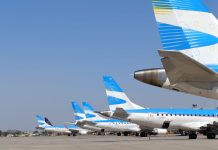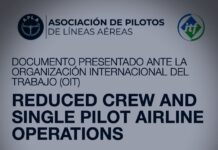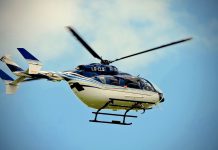IFALPAs Position Paper: Volcanic Ash Operations
Executive Summary
Dealing with hazards is inherent to aircraft operation. Like icing conditions, wake turbulence or microburst, volcanic ash introduces operational risks that can be identified and dealt with in order to achieve a safe flight.
Aircraft are not specifically designed nor certified for flight into volcanic ash simply because airworthiness requirements have not been specified with regard to volcanic ash. There is presently no clear threshold for the composition and concentration of ash that is hazardous to aviation, so the ICAO recommended practice is to avoid all volcanic ash (zero-tolerance). Current regulations and guidance for volcanic ash operations (including measurement and certification), i.e. those that resulted in the widespread airspace closure in Europe in April and May 2010, do not fulfil all operational and safety needs. This has led to devastating economic consequences. Under this pressure, the Council of European Union Transport Ministers adopted a value of 2 mg/m3 as acceptable provided that certain risk mitigating measures were implemented. IFALPA believes that such a value needs a scientific basis and this has not yet been demonstrated.
ICAO specifies that the position of the ‘ash cloud mass’ should be forecast, but does not define any threshold limits for ash concentration. Threshold ash concentration values vary over the world with no clear relationship between threshold values and aviation hazards. A continued zero-tolerance policy is probably not realistic therefore acceptable levels of exposure to defined ash-concentrations and appropriate risk mitigation measures must be established.
Volcanic Ash is first of all an operational problem as it affects the aircraft and its safe operation. The solution depends on new or revised specifications for acceptable tolerance levels from engine and airframe manufacturers which can be related to scientifically validated measurements. ICAO should establish or revise global Standards for refined threshold values for exposure to volcanic ash concentration which must be based on hazards to the aircraft and people; a so-called hazard threshold.
Furthermore flight operational and maintenance procedures must be adapted or developed and subsequently implemented. Taking into account scientifically proven aviation limits (hazard thresholds) the airlines/operators should be able to bear the responsibility for planning and executing safe flights.
The necessity of avoiding Volcanic Ash creates a problem for the Air Traffic Services (ATS). They play a significant role in the information distribution and have to prevent collisions between aircraft and to maintain an orderly flow of air traffic (ICAO Annex 11, Objectives of the Air Traffic Services), even in situations where Volcanic Ash restricts operations in large portions of airspace. ATS Contingency Plans addressing all aspects of Air Traffic Management for Volcanic Ash situations should be available for all regions of the world and be based on the needs of aircraft in flight.
Civil aviation has developed a ‘safety-first’ principle which should not be abandoned as a result of the economic pressures caused by the recent airspace closures. This means that the current principle of conservative avoidance should be maintained unless demonstrably safe hazard threshold criteria can be applied. These include accurate modelling or measurement of the hazard and certification criteria for flight in the hazard area that includes mitigation measures catering for longer term effects.
Finally, the ultimate responsibility for the safe conduct of a flight rests with the Pilot-In-Command. The Pilot-In-Command must therefore be given adequate tools, training information and guidelines to deal with volcanic ash.
IFALPA – Operations near Volcanic Ash
















